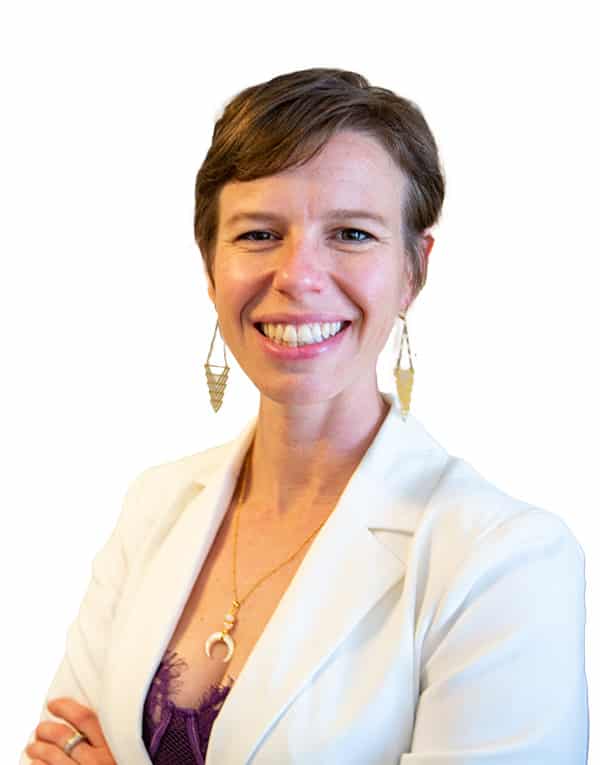In a culture that praises busyness, many people don’t realize they’re burned out until their bodies force them to stop. Fatigue. Anxiety. A sense that no amount of rest is ever enough. We call it stress, overwhelm, or just “being tired,” but often what we’re experiencing is far deeper: a dysregulated nervous system that’s been on overdrive for years.
In this blog, we’ll unpack what burnout really is from a somatic and nervous system perspective, how it sneaks into our lives (especially for high achievers and helpers), and how we can start rewiring the patterns that keep us stuck. 
In this conversation with Trauma Expert and Nervous System Specialist Sheridan Ruth, we’ll explore how our survival strategies become our burnout cycles and how healing begins when we stop trying to fix ourselves and start listening within.
Understanding Burnout Through the Lens of the Nervous System
When most people think of burnout, they imagine long work hours, too much screen time, or not enough breaks. But while these are certainly contributing factors, Sheridan offers a deeper lens: burnout isn’t just about external stress—it’s about how our nervous system is responding to it.
A healthy nervous system moves flexibly between these states depending on what’s needed. You gear up when there’s a real threat, then downshift into rest when it passes. But in modern life, especially with unresolved past experiences, many of us get stuck in either hyperactivity or shutdown.
Sheridan explains that many high performers are unknowingly living in a chronic sympathetic state, their minds always racing, their bodies tight, and their to-do lists endless. Others swing between bursts of anxious productivity and periods of exhaustion or emotional flatness.
We call it being “busy,” but what’s really happening is nervous system dysregulation.
Why Rest Doesn’t Always Work for Burnout
Have you ever taken a weekend off or even a vacation only to return just as tired as before? That’s because burnout isn’t solved by rest alone.
Sheridan notes that when the nervous system doesn’t feel safe, rest can actually feel uncomfortable. For people used to achieving, helping, or fixing, slowing down can activate internal alarms: Am I falling behind? Am I lazy? Will people still love me if I’m not useful?
In other words, the very survival strategies that got you here—your productivity, problem-solving, and perfectionism start working against you.
This explains why many people say things like:
- “I can’t stop thinking, even when I’m resting.”
- “I feel guilty when I’m not working.”
- “Rest doesn’t feel restful. I just want to get back to doing something.”
If this sounds familiar, you’re not alone. These patterns are rooted in early nervous system wiring and reinforced by a society that rewards over-functioning.
The Hidden Origins of Burnout: Childhood Survival Patterns 
One of the most powerful insights Sheridan offers is this: your burnout might be the adult version of how you survived as a child.
Maybe you were the responsible one who always helped mom out. Or the achiever who got straight As to feel seen. Or the peacekeeper who smoothed over everyone else’s tension. Whatever it was, your nervous system learned to stay safe by doing, by being useful, needed, or “the strong one.”
These roles, while adaptive in childhood, often become exhausting identities in adulthood.
You might say:
- “I always take care of everyone.”
- “If I don’t do it, no one will.”
- “I can’t slow down, everything depends on me.”
What you’re really saying is: Doing is the only way I know how to feel safe.
Burnout happens when these roles become unsustainable—but you keep pushing anyway. That’s not failure. That’s your nervous system protecting you the only way it knows how.
The Burnout Cycle in the Healing and Helping Space
Sheridan brings a refreshing perspective on how burnout shows up even in healing and self-development spaces.
She describes how many people (especially sensitive, empathic, or purpose-driven folks) get caught in a loop of:
- Feeling overwhelmed or anxious
- Trying to fix it by learning more, healing more, or doing another training
- Getting relief for a bit… only to fall back into exhaustion or doubt
This creates a cycle where healing itself becomes another performance, driven by the same nervous system patterns.
What begins as a desire to grow ends up reinforcing the belief that you are broken and need to be fixed.
Sheridan’s invitation? Stop trying to heal yourself into wholeness. Start relating to yourself as already whole and let your nervous system catch up to that truth.
What Nervous System Regulation Actually Feels Like
Regulation is a word that gets thrown around a lot, but what does it really mean?
Sheridan says it’s not about always being calm or stress-free. True regulation means your system knows how to return to safety after activation. You feel anchored, curious, and present. You can engage with life without feeling like you’re drowning or disconnected.
In her work, Sheridan often uses the phrase “down and back” as a somatic cue. Instead of chasing that forward, fix-it energy, she invites us to:
- Pause
- Drop awareness down into the body
- Let the breath go back into the spine, into the space behind you
This “down and back” energy interrupts the burnout spiral and gently signals to the body: you’re safe now.
It may sound simple, but it’s profound. Especially when practiced consistently.
Rewriting Your Burnout Story: A Somatic Approach
Sheridan outlines a 3-part somatic framework in her book Somatic Intelligence for Success, which is designed to help leaders, entrepreneurs, and creatives move out of chronic burnout and into aligned, sustainable success.
While the full process is best explored in her programs or book, the core principles include:
- Clarity of Intention: Choose one clear, meaningful priority. Most people have too many.
- Awareness of Parts: Get curious about the internal voices driving you. Is this your “fixer,” your “overachiever,” your “protector”?
- Somatic Integration: Use nervous system tools, movement, and presence to build capacity and safety from within.
Success, she says, isn’t just about reaching your goals. It’s about how your body feels on the way there.
How to Know If You’re Headed Toward Burnout
Not sure if you’re in burnout? Here are some subtle (and not-so-subtle) signs:
- Constant mental chatter or restlessness, even when you’re “off”
- Trouble sleeping despite feeling tired
- Feeling guilty or unproductive when resting
- Low motivation, emotional numbness, or a sense of detachment
- The sense that “something’s off,” even if everything looks fine on the outside
- A desire to isolate or “disappear” from responsibilities
- Feeling like your healing isn’t working anymore
If you nodded along to more than a few of these, take it as a sign: your nervous system is asking for your attention—not your discipline.
Healing Burnout Isn’t About Doing More. It’s About Doing Differently.
Healing doesn’t require fixing every flaw or getting rid of every anxious thought. It asks you to relate to yourself from safety not from fear.
That might mean:
- Choosing one clear focus instead of chasing ten
- Giving yourself permission to rest without earning it
- Asking, “what would feel nourishing right now?” instead of “what should I do?”
- Building small rituals that signal to your body: you’re safe, you’re supported
Final Thoughts: Your Nervous System Is Not the Enemy
Burnout is a wake-up call not a weakness. It’s your nervous system saying: what used to keep you safe is no longer sustainable.
And that’s good news. Because it means you’re ready to create something different.
As Sheridan shared in the podcast, the dream isn’t just about success it’s about going to work, showing up in your life, and feeling calm, connected, and clear. That’s what real nervous system regulation offers.
You don’t need to become someone new. You need to come home to the version of you that’s been safe to be here all along.
You can listen to the full story on Leading With Spirit [Episode 107]: Start Healing Burnout with Sheridan Ruth


